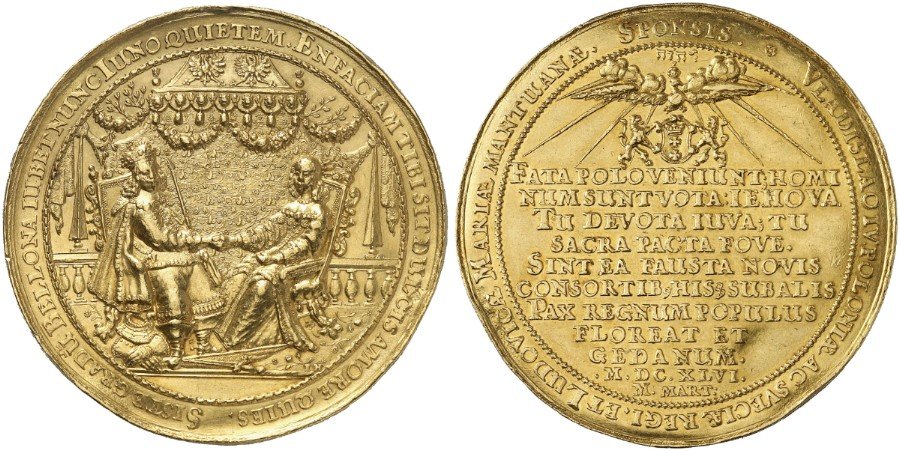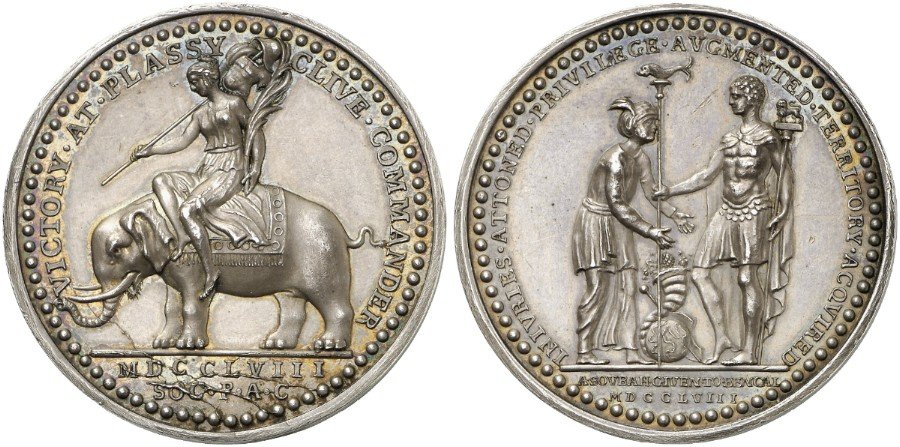Kuenker Georg Baums medals auction:

Lot 5027
Gold Medal to 16 ducats 1646, by j. Höhn, on the second marriage of Władysław IV. with Ludovica Maria Gonzaga (* 1611, d. 1667), Princess of Mantua. SISTE GRADU.MP3 BELLONA IUBET NUNC JUNO QUIETEM. EN FACIAM TIBI SIT DULCIS AMORE QUIES. The crowned King with coat the to and sceptre and the Queen in robes sit in armchairs opposite each other under the richly decorated throne sky and range to the right hand, weapons lying on the ground...
This marriage medal struck in 1611, to commemorate Wadislav IV's marriage to Maria Gonzaga realized $75,000 with hammer fees in the latest Kuenker auction. It is difficult to compare the price to past auctions, as there are no other recent records of this medal changing hands. Clearly there were several wealthy bidders competing for Russian and East European medals, as pieces in those categories were very expensive indeed. For the Russians, at least, medals have become as interesting as coins.
In all 1090 medals were auctioned off from the Georg Baum collection, which included many rarities from all periods and countries.
Yet the very strength of the sheer number and variety guaranteed tremendous opportunity for medals collectors. In the arena of ancient coins, collections tend to center around broad themes that will attract specific collectors and foster tremendous competition for rare issues. But when an auction is so broad that it spans various continents and eras, it's easy for collectors to miss out on hidden gems.
In some cases, like a rare British Indian silver medal depicting Clive's seige of Pondicherry the piece realized 7000 dollars which was several thousand more than this medal had ever realized before;

But in other cases, extremely rare and beautiful pieces went for absolute baragain prices, like this Hamerani portrait of pope Innocence XI, which slipped through for an incredible $2500, when pieces in similar condition and rarity were auctioned off last year in an auction devoted to papal medals and coins for 10 to 20 times that amount:

Likewise, certain British and French rarities brought a tiny fraction of the price they would have cost in auctions devoted specifically to coins and medals of those countries. The same dynamic tends to hold true for coin auctions: when the auctions are sufficiently large and diverse rarities tend much more readily to slip through the cracks. But with medals, this tendency is certainly magnified as the collector base is still so much smaller.
In all there continues to be tremendous opportunity in the medals arena for collectors who have discovered this most unloved numismatic area.
No comments:
Post a Comment